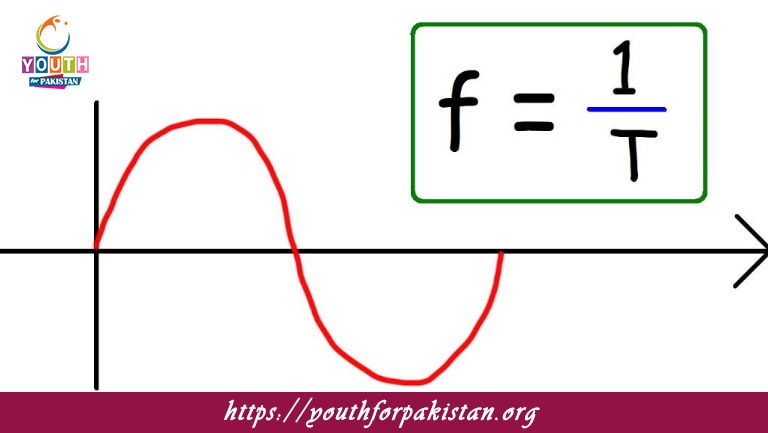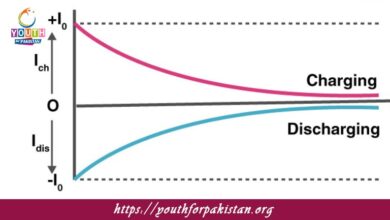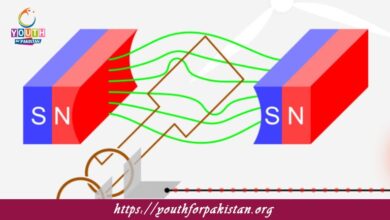Time Period And Frequency MDCAT MCQs with Answers

Welcome to the Time Period And Frequency MDCAT MCQs with Answers. In this post, we have shared Time Period And Frequency Multiple Choice Questions and Answers for PMC MDCAT 2024. Each question in MDCAT Physics offers a chance to enhance your knowledge regarding Time Period And Frequency MCQs in this MDCAT Online Test.
Time Period And Frequency MDCAT MCQs Test Preparations
If the initial velocity of a projectile is doubled, the time of flight will be:
A) Doubled
B) Quadrupled
C) Halved
D) Unchanged
The time of flight of a projectile is independent of:
A) Initial velocity
B) Angle of projection
C) Acceleration due to gravity
D) Horizontal range
For a projectile, the time of flight is maximum when the angle of projection is:
A) 30 degrees
B) 45 degrees
C) 60 degrees
D) 90 degrees
The time of flight for a projectile is doubled. The range will be:
A) Doubled
B) Quadrupled
C) Halved
D) Unchanged
The time of flight of a projectile is influenced by:
A) Initial velocity
B) Angle of projection
C) Acceleration due to gravity
D) All of the above
The time of flight for a projectile is unaffected by:
A) Angle of projection
B) Initial velocity
C) Acceleration due to gravity
D) Horizontal range
If the angle of projection is 60 degrees and initial velocity is doubled, the time of flight will be:
A) Doubled
B) Quadrupled
C) Halved
D) Unchanged
The time of flight is maximum when the angle of projection is:
A) 30 degrees
B) 45 degrees
C) 60 degrees
D) 90 degrees
For a given initial velocity, the time of flight of a projectile is:
A) Directly proportional to the square of the initial velocity
B) Inversely proportional to the acceleration due to gravity
C) Directly proportional to the initial velocity
D) Independent of the angle of projection
The time of flight of a projectile is determined by:
A) Initial velocity and angle of projection
B) Range and height
C) Horizontal distance and vertical distance
D) Acceleration due to gravity only
The time of flight of a projectile is:
A) Independent of the range
B) Directly proportional to the range
C) Inversely proportional to the range
D) Unrelated to the range
The time of flight for a projectile depends on:
A) Initial speed
B) Angle of projection
C) Acceleration due to gravity
D) All of the above
The time of flight of a projectile is:
A) Independent of the horizontal range
B) Directly proportional to the vertical displacement
C) Independent of the initial velocity
D) Directly proportional to the angle of projection
The time of flight of a projectile is zero if the angle of projection is:
A) 0 degrees
B) 45 degrees
C) 90 degrees
D) 180 degrees
The time of flight for a projectile is the same when the angle of projection is:
A) 30 degrees and 60 degrees
B) 45 degrees and 60 degrees
C) 30 degrees and 90 degrees
D) 45 degrees and 90 degrees
The time of flight is maximum when the projectile is launched at an angle of:
A) 30 degrees
B) 45 degrees
C) 60 degrees
D) 90 degrees
The time of flight of a projectile depends on:
A) Initial speed
B) Angle of projection
C) Acceleration due to gravity
D) All of the above
The time of flight of a projectile depends on the:
A) Initial velocity and angle of projection
B) Horizontal range and vertical range
C) Acceleration due to gravity
D) Both A and C
The frequency of a wave is 50 Hz. What is its time period?
A) 0.02 s
B) 0.05 s
C) 2 s
D) 50 s
If the time period of a wave is 0.1 seconds, what is its frequency?
A) 10 Hz
B) 100 Hz
C) 1 Hz
D) 0.1 Hz
The time period of a simple pendulum depends on which of the following factors?
A) Mass of the pendulum
B) Amplitude of the pendulum
C) Length of the pendulum
D) Color of the pendulum
If the frequency of a tuning fork is doubled, what happens to its time period?
A) It is doubled
B) It is halved
C) It remains the same
D) It is quadrupled
The frequency of a wave is defined as:
A) The number of wavelengths in one second
B) The time taken for one wavelength to pass a point
C) The distance between two consecutive crests
D) The speed of the wave divided by the wavelength
For a wave with a frequency of 20 Hz, what is the time period?
A) 0.05 s
B) 0.2 s
C) 2 s
D) 20 s
The time period of a pendulum is 2 seconds. What is its frequency?
A) 0.5 Hz
B) 2 Hz
C) 4 Hz
D) 1 Hz
The frequency of a wave is 500 Hz. What is the angular frequency?
A) 1000π rad/s
B) 500π rad/s
C) 100π rad/s
D) 250π rad/s
If a wave has a time period of 0.02 seconds, its frequency is:
A) 20 Hz
B) 50 Hz
C) 5 Hz
D) 0.02 Hz
What is the time period of a wave with a frequency of 60 Hz?
A) 0.01 s
B) 0.02 s
C) 0.5 s
D) 1.5 s
The time period of a wave is 0.25 seconds. What is its frequency?
A) 0.25 Hz
B) 2 Hz
C) 4 Hz
D) 5 Hz
If the time period of a wave is 0.5 seconds, its frequency is:
A) 2 Hz
B) 0.5 Hz
C) 1 Hz
D) 0.2 Hz
The frequency of a wave is directly proportional to:
A) Wavelength
B) Time period
C) Speed
D) Frequency
What is the time period of a wave with a frequency of 2 kHz?
A) 0.002 s
B) 0.5 s
C) 2 s
D) 0.02 s
If the time period of a wave is increased, its frequency will:
A) Increase
B) Decrease
C) Remain the same
D) Double
For a wave with a frequency of 100 Hz, the time period is:
A) 0.1 s
B) 1 s
C) 10 s
D) 100 s
The time period of a pendulum does not depend on:
A) Length of the pendulum
B) Mass of the pendulum
C) Gravitational acceleration
D) Amplitude of swing
If the frequency of a wave is halved, what happens to its time period?
A) It is doubled
B) It is halved
C) It remains the same
D) It is quadrupled
The time period of a wave is the:
A) Number of oscillations per second
B) Distance traveled in one oscillation
C) Time taken for one complete cycle
D) Speed of the wave divided by wavelength
The frequency of a wave is measured in:
A) Seconds
B) Hertz
C) Meters
D) Newtons
If the time period of a wave is 0.02 seconds, the frequency is:
A) 50 Hz
B) 200 Hz
C) 10 Hz
D) 5 Hz
The frequency of a wave is the:
A) Reciprocal of the time period
B) Square of the time period
C) Cube of the time period
D) Sum of the time period and wavelength
For a wave with a frequency of 10 Hz, the time period is:
A) 0.1 s
B) 1 s
C) 10 s
D) 0.01 s
The time period and frequency of a wave are:
A) Inversely proportional
B) Directly proportional
C) Unrelated
D) Both squared quantities
The time period of a simple harmonic oscillator is:
A) Directly proportional to the frequency
B) Inversely proportional to the frequency
C) Unrelated to the frequency
D) Equal to the frequency
A wave has a frequency of 5 Hz. Its time period is:
A) 0.2 s
B) 0.5 s
C) 2 s
D) 5 s
The frequency of a wave is:
A) The number of waves passing a point in one second
B) The distance between two consecutive crests
C) The speed of the wave divided by the wavelength
D) The amplitude of the wave
The time period of a pendulum is independent of:
A) The mass of the pendulum
B) The length of the pendulum
C) The gravitational acceleration
D) The amplitude of the swing
The frequency of a wave is:
A) The number of cycles per second
B) The time for one complete cycle
C) The speed of the wave
D) The wavelength of the wave
The time period of a wave is:
A) The reciprocal of the frequency
B) The product of the frequency and speed
C) The distance between two consecutive crests
D) The speed divided by wavelength
For a wave with a frequency of 50 Hz, the time period is:
A) 0.02 s
B) 0.1 s
C) 2 s
D) 5 s
If the frequency of a wave is 1 kHz, its time period is:
A) 0.001 s
B) 0.01 s
C) 1 s
D) 1000 s
The time period of a wave is:
A) The same for all waves
B) Directly proportional to the frequency
C) Inversely proportional to the frequency
D) Twice the frequency
If the time period of a pendulum is increased, what happens to its frequency?
A) It increases
B) It decreases
C) It remains the same
D) It doubles
The frequency of a wave is the:
A) Number of cycles per second
B) Speed divided by wavelength
C) Reciprocal of the wavelength
D) Product of the time period and wavelength
The time period of a wave is 0.1 seconds. What is the frequency?
A) 10 Hz
B) 0.1 Hz
C) 1 Hz
D) 100 Hz
If the time period of a wave is 0.05 seconds, its frequency is:
A) 20 Hz
B) 50 Hz
C) 0.05 Hz
D) 0.5 Hz
If you are interested to enhance your knowledge regarding Physics, Chemistry, Computer, and Biology please click on the link of each category, you will be redirected to dedicated website for each category.





